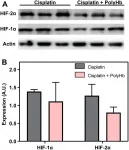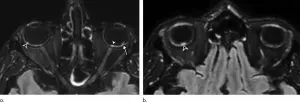(Press-News.org) According to some estimates, chronic pain affects up to 40% of Americans, and treating it frustrates both clinicians and patients--a frustration that's often compounded by a hesitation to prescribe opioids for pain.
A new study from the University of Michigan School of Dentistry confirms that a low dose of a drug called naltrexone is a good option for patients with orofacial and chronic pain, without the risk of addiction, said first author Elizabeth Hatfield, a clinical lecturer in the Department of Oral and Maxillofacial Surgery and Hospital Dentistry.
Naltrexone is a semisynthetic opioid first developed in 1963 as an oral alternative to naloxone, the nasal spray used to reverse opioid drug overdoses. When prescribed at doses of 50 to 100 milligrams, naltrexone blocks the effects of alcohol and opioids.
Low-dose naltrexone has been used off-label for years to treat chronic pain, but Hatfield said this is the first in-depth, systematic review of the literature to determine if the drug is indeed a good option for patients and deserving of more formal study.
"We found a reduction in pain intensity and improvement in quality of life, and a reduction in opioid use for patients with chronic pain," said Hatfield, who hopes to initiate a randomized control trial of low dose naltrexone.
Low doses of naltrexone (0.1-4.5 mg) works by acting on a unique cellular pathway in the nervous system through which it delivers chronic pain relief without opioids, Hatfield said. If patients are working with a physician to treat pain, it's appropriate for them to raise the topic of low-dose naltrexone as a possible alternative.
Chronic pain is pain that persists for several months, or after the initial injury or trauma has healed, and the way clinicians and scientists think about chronic pain is changing. It's now thought that some chronic pain has more to do with how our body reports pain to the brain, than the actual injury.
"Normally, chronic pain leads your body to go through a sensitization process whereas your nervous system becomes more sensitive, and this can happen even to nonpainful stimuli," Hatfield said. "The way I like to explain it to learners or patients is how a sunburn makes you feel, when things that normally feel OK hurt, like a warm shower or a sheet touching your skin."
This concept of the nervous system being sensitized is promoted by cells called glial cells. Low-dose naltrexone targets these cells that keep the nervous system sensitized, thereby reducing the pain threshold and the sensitivity of the nervous system over time.
Traditional pain management has focused on treating the injury or trauma site, but low-dose naltrexone works on the overactive nervous system.
"Low-dose naltrexone begins to address the cause of pain and not just mask it, which allows us to better target diseases causing chronic pain, as well as potentially consider pain control outside of opioid use," Hatfield said.
It is best used on centralized pain disorders, conditions where the nervous system is in that hyperexcited state, Hatfield said. Those conditions include myalgia, complex regional pain syndrome and temporomandibular joint disorders, commonly called TMJ, among others. Low-dose naltrexone is inexpensive and has few side effects. However, it's not an option for people who use alcohol or opioids regularly.
Hatfield became interested in the field of orofacial pain after study co-author Lawrence Ashman, clinical assistant professor of dentistry, started a residency in orofacial pain in 2018. Two years later, Hatfield was the first graduate of the two-year Orofacial Pain Residency program in the OMS/Hospital Dentistry Department.
There are only 13 residencies in orofacial pain in the country, Hatfield said. However, the pain specialty makes sense for dentistry, because this pain is related to joint and muscles surrounding the oral cavity and hasn't been previously "owned" by dentists or medicine.
Many patients are first exposed to opioids through dentistry. While there is a place for well-managed opioid treatment for chronic pain patients, alternative treatments are needed, she said.
INFORMATION:
The study appears in the Journal of the American Dental Association.
Study abstract: Use of low dose naltrexone in the management of chronic pain conditions: A systematic review
Elizabeth Hatfield
HOUSTON - (Feb. 15, 2021) - Rice University engineers have suggested a colorful solution to next-generation energy collection: Luminescent solar concentrators (LSCs) in your windows.
Led by Rafael Verduzco and postdoctoral researcher and lead author Yilin Li of Rice's Brown School of Engineering, the team designed and built foot-square "windows" that sandwich a conjugated polymer between two clear acrylic panels.
That thin middle layer is the secret sauce. It's designed to absorb light in a specific wavelength and guide it to panel edges lined with solar cells. Conjugated polymers are chemical compounds ...
Researchers from the University of Southampton and Université Laval, Canada, have successfully measured for the first time back-reflection in cutting-edge hollow-core fibres that is around 10,000 times lower than conventional optical fibres.
This discovery, published this week in The Optical Society's flagship Optica journal, highlights yet another optical property in which hollow-core fibres are capable of outperforming standard optical fibres.
Research into improved optical fibres is key to enable progress in numerous photonic applications. Most notably, these would improve Internet performance ...
Oncotarget recently published "Polymerized human hemoglobin increases the effectiveness of cisplatin-based chemotherapy in non-small cell lung cancer" which reported that unfortunately, a significant portion of NSCLC patients relapse due to cisplatin chemoresistance.
Administration of hemoglobin-based oxygen carriers is a promising strategy to alleviate hypoxia in the tumor, which may make cisplatin more effective.
The R-state PolyHb administered in this study is unable to deliver O2 unless under severe hypoxia which significantly limits its oxygenation potential.
In vitro sensitivity studies indicate that the administration of PolyHb increases the effectiveness of cisplatin under ...
BOSTON -- While PCR testing has been used widely for COVID-19 diagnosis, it only provides information on who is currently infected. Antibody testing can tell who has been previously exposed to SARS-CoV-2, the virus that causes COVID-19, a metric that is essential for tracking spread across a population. It may also, as a study recently published in the journal Nature Communications shows, hold the key to understanding the immune response to the virus.
Led by Galit Alter, PhD, Core Member of the Ragon Institute of MGH, MIT and Harvard, this study found that while antibodies against SARS-CoV-2 may be a good way to measure exposure to the virus, their presence alone wasn't enough to determine if a person had long-lasting protection. Instead, antibody effector functions associated ...
OAK BROOK, Ill. - Radiomics--the extraction of very detailed quantitative features from medical images--provides a refined understanding of how cocaine use and other risk factors affect the course of coronary artery disease, according to a study published in Radiology. Researchers said the study shows the power of radiomics to improve understanding of not just cardiovascular disease, but cancer and other conditions as well.
Coronary artery disease typically develops over time as plaque builds up inside the arteries. This process, known as atherosclerosis, ...
OAK BROOK, Ill. - Researchers using MRI have found significant abnormalities in the eyes of some people with severe COVID-19, according to a study published in the journal Radiology. The study results support the need for eye screening in these patients to provide appropriate treatment and management of potentially severe ophthalmological manifestations of COVID-19.
The COVID-19 pandemic has affected more than 100 million people since it began early in 2020. While the virus primarily attacks the lungs, it has been linked with eye abnormalities ...
Launched in 1988, the Global Polio Eradication Initiative (GPEI) stands out as one of the largest, internationally coordinated global public health major projects conducted to date, with cumulative spending of over $16.5 billion for 1988-2018, according to the World Health Organization (WHO). More than 30 years later, stubborn outbreaks of wild poliovirus still occur in Afghanistan and Pakistan, where cases have been increasing since 2018. The global eradication of polio continues to be an elusive goal.
A special issue of the journal Risk Analysis, titled "Global Poliovirus Risk Management and Modeling," looks at the current status of polio eradication ...
Earth is home to millions of known species of plants and animals, but by no means are they distributed evenly. For instance, rainforests cover less than 2 percent of Earth's total surface, yet they are home to 50 percent of Earth's species. Oceans account for 71 percent of Earth's total surface but contain only 15 percent of Earth's species. What drives this uneven distribution of species on Earth is a major question for scientists.
In a paper published February 16 in the Journal of Biogeography an international team of researchers led by Jacob S. Suissa, Ph.D. Candidate in the Department of Organismic and Evolutionary Biology, ...
Memorial Sloan Kettering Cancer Center (MSK) physicians and scientists presented new research at the 2021 American Society of Clinical Oncology Genitourinary Cancers Symposium held virtually February 11-13. Notably, MSK medical oncologist Robert Motzer, MD, presented encouraging data from a phase III randomized study that assessed two new treatment combinations as first-line treatments that may prolong survival in people with advanced kidney cancer. Dr. Motzer's findings were also published on February 13 in the New England Journal of Medicine.
In this large, international trial involving 200 sites across 20 countries, Dr. Motzer and a team of investigators ...
Using advanced RNA sequencing, scientists have identified two unique subtypes of a prominent mutation present in many patients with Acute Myeloid Leukemia (AML) - called NPM1 - that could help predict survival and improve treatment response for patients whose leukemic cells bear the mutation.
In research published Feb. 16, in Nature Communications, a team led by Princess Margaret Cancer Centre Senior Scientists, Drs. Benjamin Haibe-Kains, Aaron Schimmer and Mark Minden, have discovered that within the NPM1 mutation of AML there exists two unique subtypes, one of which can be effectively treated with drugs already in use.
It is the first study to classify within the common NPM1 mutant form of AML two subtypes, one being "primitive" and the other ...





